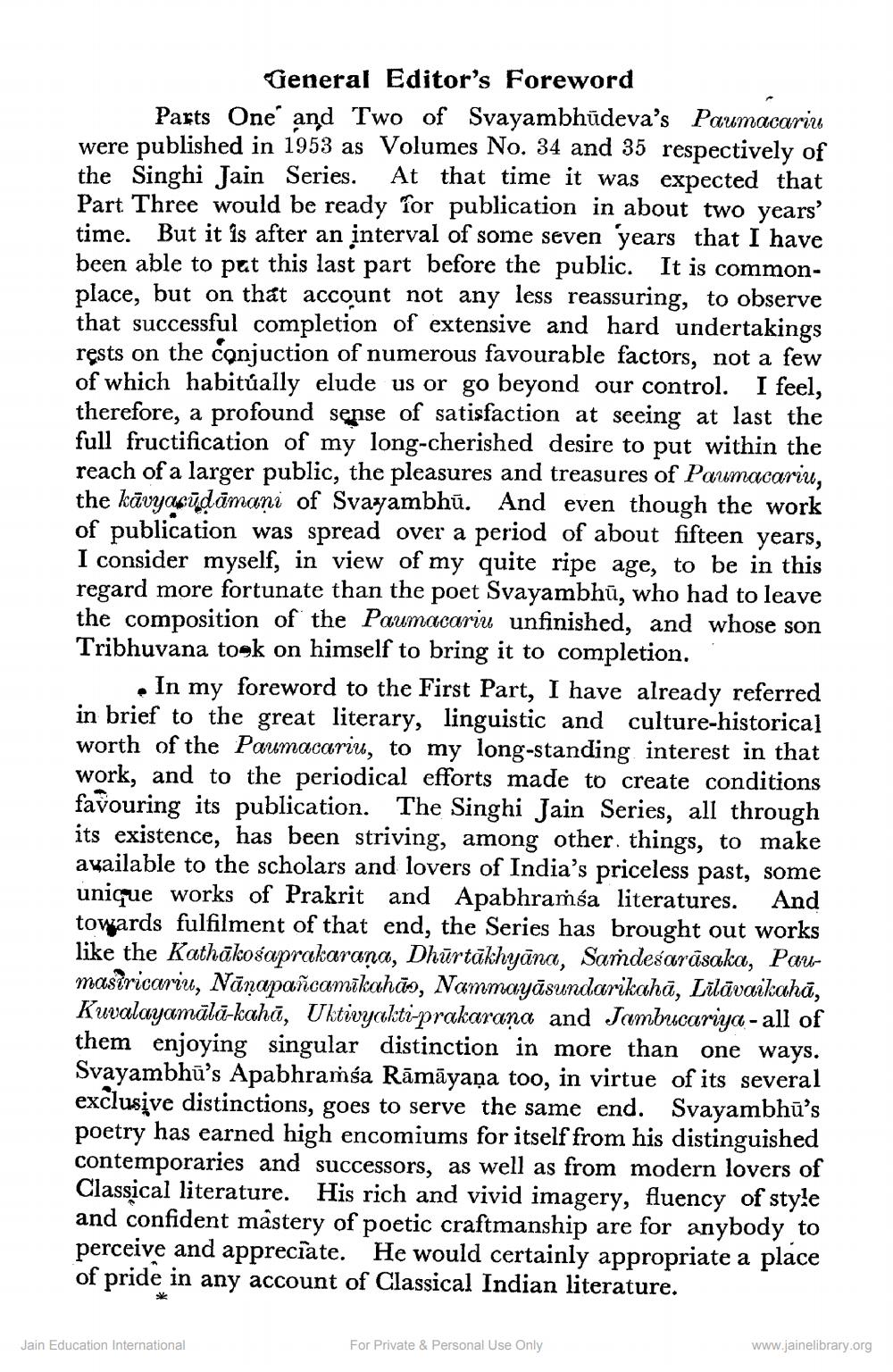________________
General Editor's Foreword Parts One and Two of Svayambhūdeva's Paumacariu were published in 1953 as Volumes No. 34 and 35 respectively of the Singhi Jain Series. At that time it was expected that Part Three would be ready for publication in about two years' time. But it is after an interval of some seven years that I have been able to put this last part before the public. It is commonplace, but on that account not any less reassuring, to observe that successful completion of extensive and hard undertakings rests on the conjuction of numerous favourable factors, not a few of which habitually elude us or go beyond our control. I feel, therefore, a profound sense of satisfaction at seeing at last the full fructification of my long-cherished desire to put within the reach of a larger public, the pleasures and treasures of Paumacariu, the kāvyasūdāmani of Svayambhū. And even though the work of publication was spread over a period of about fifteen years, I consider myself, in view of my quite ripe age, to be in this regard more fortunate than the poet Svayambhū, who had to leave the composition of the Paumacariu unfinished, and whose son Tribhuvana took on himself to bring it to completion.
In my foreword to the First Part, I have already referred in brief to the great literary, linguistic and culture-historical worth of the Paumacariu, to my long-standing interest in that work, and to the periodical efforts made to create conditions favouring its publication. The Singhi Jain Series, all through its existence, has been striving, among other things, to make available to the scholars and lovers of India's priceless past, some unique works of Prakrit and Apabhraṁsa literatures. And towards fulfilment of that end, the Series has brought out works like the Kathākosaprakarana, Dhārtākhyāna, Sandesarāsaka, Paumastricariu, Nānapañcamikahā), Nammayāsundarikahā, Lilāvaikahā, Kuvalayamālā-kahā, Uktivyakti-prakarana and Jambucariya - all of them enjoying singular distinction in more than one ways. Svayambhū's Apabhramśa Rāmāyaṇa too, in virtue of its several exclusive distinctions, goes to serve the same end. Svayambhū’s poetry has earned high encomiums for itself from his distinguished contemporaries and successors, as well as from modern lovers of Classical literature. His rich and vivid imagery, fluency of style and confident mâstery of poetic craftmanship are for anybody to perceive and appreciate. He would certainly appropriate a place of pride in any account of Classical Indian literature.
Jain Education International
For Private & Personal Use Only
www.jainelibrary.org




